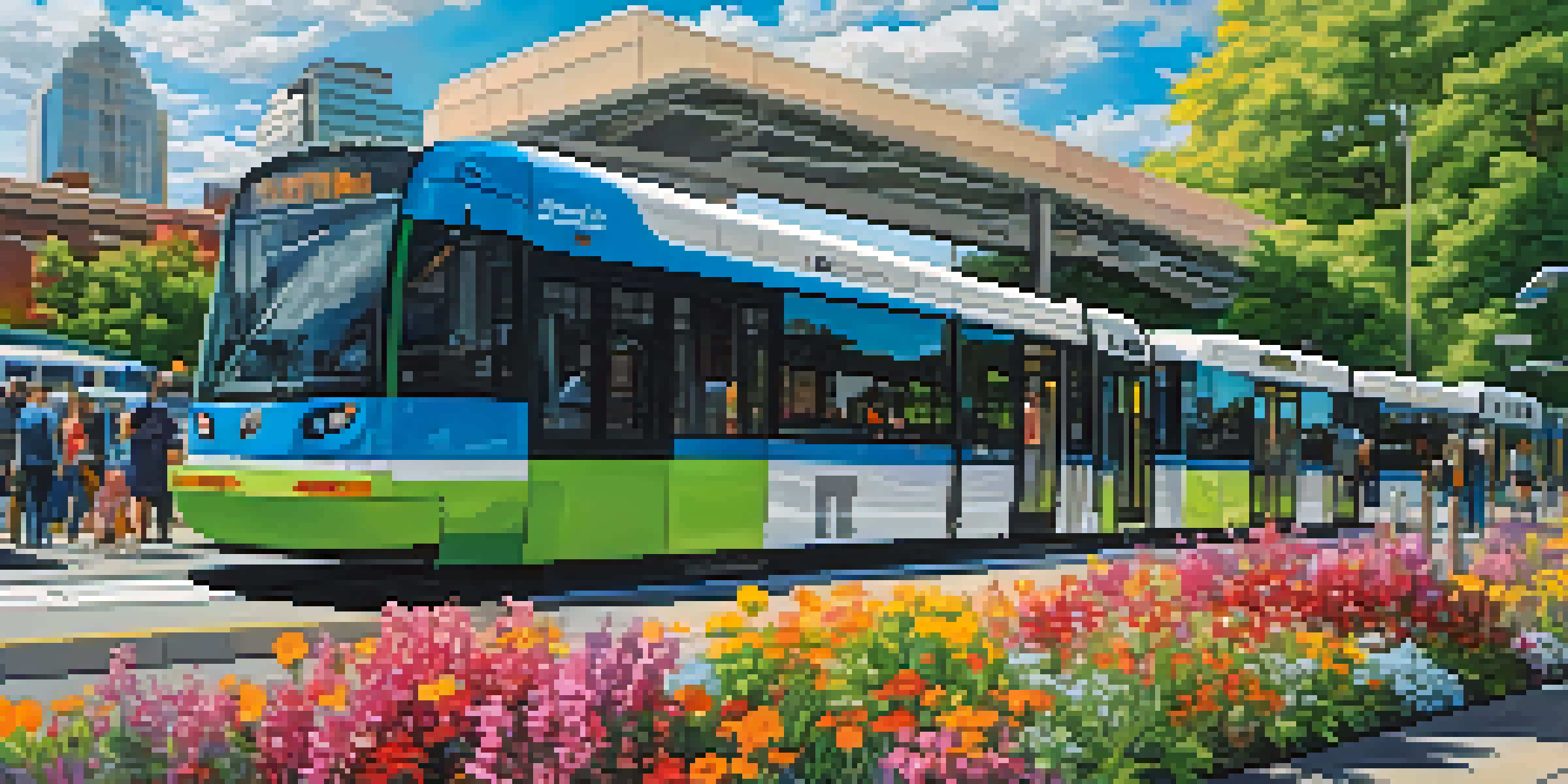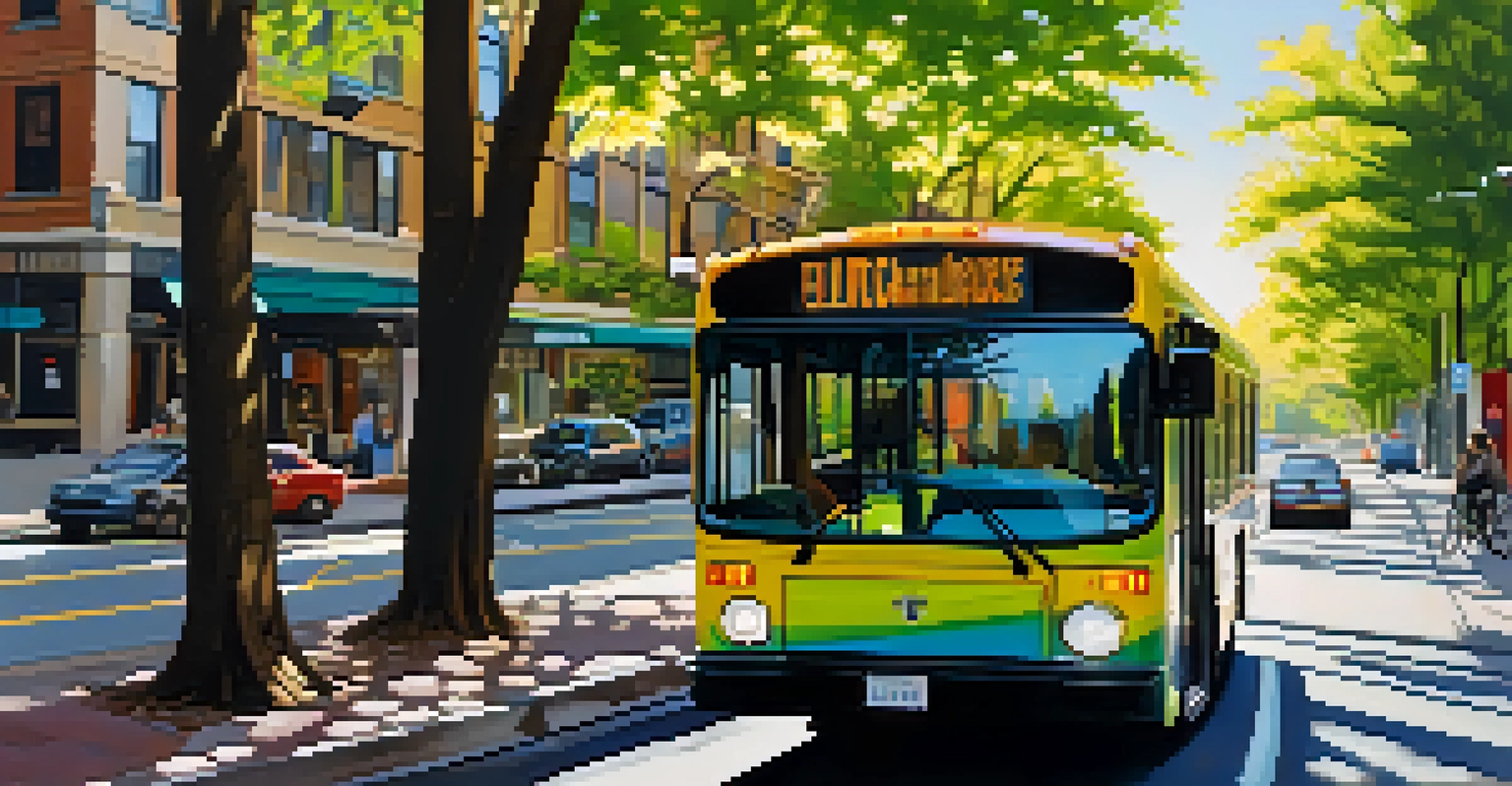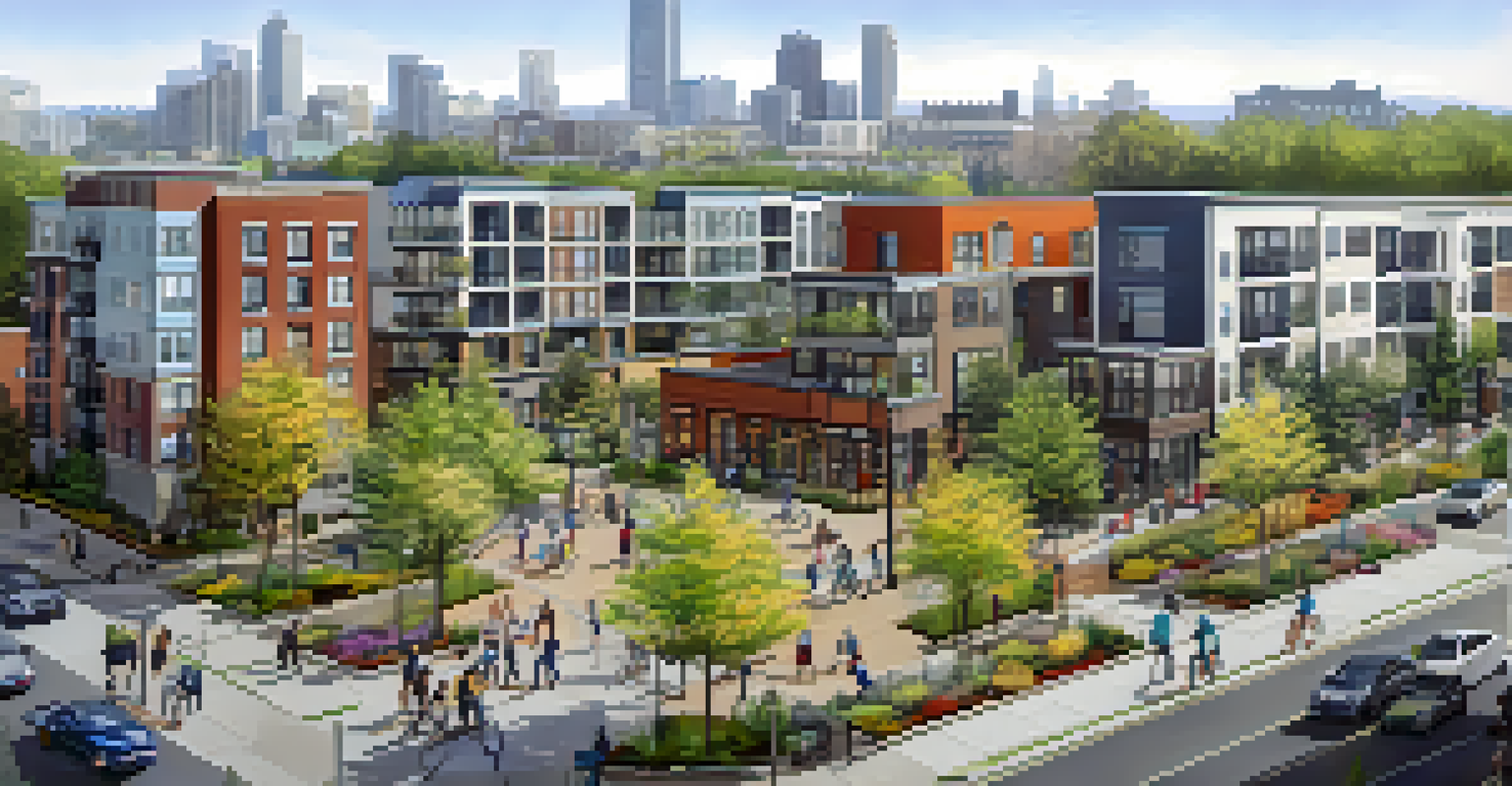Public Transportation Improvements Boost Seattle's Eco-Friendliness

Seattle's Commitment to Sustainable Transportation
Seattle has long been at the forefront of sustainability, and its public transportation system is a testament to that commitment. The city has invested heavily in expanding and improving its transit options to reduce reliance on personal vehicles. This shift not only eases traffic congestion but also plays a crucial role in lowering carbon emissions, making Seattle a greener place to live.
Sustainability is no longer about doing less harm. It's about doing more good.
In recent years, initiatives like the Link Light Rail expansion and the introduction of electric buses have transformed how residents navigate the city. These improvements are designed to offer efficient, eco-friendly alternatives to driving. As a result, Seattle is setting a standard for urban centers aiming to prioritize environmental sustainability.
Moreover, these enhancements contribute to a more connected community, making it easier for people to access jobs, education, and recreational activities without the need for a car. By promoting public transit, Seattle is not just improving transportation; it's fostering a culture of eco-consciousness.
The Role of Electric Buses in Reducing Emissions
One of the most significant advancements in Seattle's public transportation is the rollout of electric buses. These vehicles produce zero emissions at the tailpipe, which dramatically reduces air pollution in the city. By replacing traditional diesel buses with electric ones, Seattle is taking a giant leap toward cleaner air and better public health.

Electric buses also contribute to quieter streets, creating a more pleasant urban environment. As they glide silently along their routes, residents can enjoy a more peaceful city ambiance. This aspect of public transit is often overlooked, yet it significantly enhances the quality of life for those living and working in Seattle.
Seattle's Eco-Friendly Transit Growth
Seattle is enhancing its public transportation system with electric buses and expanded light rail to promote sustainability and reduce carbon emissions.
In addition to their environmental benefits, electric buses are often more cost-effective over time due to lower maintenance and fuel costs. This financial advantage makes them a smart choice for the city, allowing Seattle to reinvest savings into further public transportation improvements.
Enhancements in Light Rail: A Game Changer for Commuters
The expansion of Seattle's Link Light Rail has been a game changer for commuters and the environment alike. With new stations and extended lines, more residents can access fast, reliable transportation without needing to drive. This accessibility encourages more people to opt for public transit, further decreasing the number of cars on the road.
Public transportation is a critical component of a sustainable future.
Light rail is not only efficient but also an attractive option for those looking to reduce their carbon footprint. By making public transportation a viable choice for more residents, Seattle is encouraging sustainable commuting habits. This shift is crucial as the city continues to grow and evolve.
As the light rail system expands, it integrates seamlessly with other transit options, creating a comprehensive network that prioritizes eco-friendliness. This interconnectedness means that more people can travel sustainably, contributing to Seattle's overall sustainability goals.
Improved Accessibility for All Residents
Accessibility is a vital aspect of any public transportation system, and Seattle is making strides to ensure that everyone can benefit from its transit options. Recent improvements have focused on making buses and trains easier to use for individuals with disabilities. This effort not only aligns with inclusive values but also enhances the overall efficiency of the system.
By providing accessible transit, Seattle encourages all residents to utilize public transportation, regardless of their mobility challenges. This inclusivity fosters a sense of community and belonging, as everyone can participate in the city's eco-friendly initiatives. It also reinforces the idea that sustainable transportation should be a right, not a privilege.
Inclusive Transit for All Residents
Improvements in accessibility ensure that Seattle's public transportation is usable by everyone, fostering a sense of community and encouraging eco-friendly travel.
Beyond just physical accessibility, Seattle's public transit improvements also aim to be financially accessible. Reduced fares and programs for low-income residents ensure that everyone has the opportunity to travel sustainably without financial strain.
The Impact of Transit-Oriented Development
Transit-oriented development (TOD) is a strategic approach that Seattle is embracing to complement its public transportation improvements. By focusing on building residential and commercial areas near transit hubs, Seattle is encouraging a lifestyle that prioritizes public transportation over car ownership. This planning method not only enhances convenience but also supports the city's sustainability goals.
TOD reduces the need for long commutes, thereby decreasing traffic congestion and pollution. It creates vibrant neighborhoods where residents can live, work, and play all within a short distance of public transit options. Such developments are vital in promoting a culture that values eco-friendly living.
Moreover, this strategy fosters economic growth by attracting businesses and creating jobs in areas well-served by public transit. As communities develop around transit, Seattle is not just improving transportation; it’s also boosting local economies and enhancing overall urban livability.
Community Involvement in Transportation Planning
Community involvement is crucial in shaping Seattle's public transportation landscape. The city actively encourages residents to participate in planning processes, ensuring that their needs and preferences are considered in transit improvements. This collaborative approach helps create a transportation system that truly reflects the community's values and priorities.
Public forums, surveys, and workshops allow residents to voice their opinions on proposed projects and improvements. This engagement fosters a sense of ownership among community members, making them more likely to utilize and support public transportation initiatives. It also helps the city identify gaps in service and areas for improvement.
Community Engagement in Planning
Active community involvement in transportation planning helps shape a transit system that reflects residents' needs and supports sustainable urban development.
By prioritizing community input, Seattle is creating a public transportation system that is not only efficient but also responsive to the diverse needs of its residents. This partnership between the city and its citizens is essential for the ongoing success of eco-friendly transit initiatives.
Future Prospects for Seattle's Eco-Friendly Transit
Looking ahead, Seattle's public transportation improvements promise to continue evolving in ways that enhance eco-friendliness. Future plans include expanding electric bus routes, increasing light rail access, and exploring innovative technologies such as autonomous vehicles. These developments could revolutionize how residents engage with public transport and further reduce the city's environmental impact.
Moreover, as climate change becomes an increasingly pressing issue, cities like Seattle are recognizing the urgent need for sustainable solutions. The ongoing commitment to enhancing public transportation will not only help meet these challenges but also inspire other urban centers to adopt similar eco-friendly practices.

Ultimately, Seattle's proactive approach to public transit positions it as a leader in sustainable urban development. By continuing to invest in and improve transportation options, the city is setting a powerful example for others to follow, proving that eco-friendliness and urban mobility can go hand in hand.